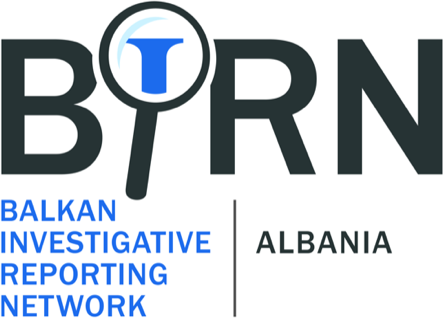Society
According to the annual population estimate published by Albania’s Institute of Statistics (INSTAT) the resident population as of January 1st 2023 was 2.76 million people, a drop of 1.1 percent compared to the previous years. In 2022, the natural population growth was 690 births more than deaths. The average age on January 1st 2023 was 38.8, compared to 38.2 on January 1st 2022. The Albanian population started declining in 1990, as a result of massive emigration following the collapse of the communist regime, which banned travel outside the country. INSTAT estimates that between 2001 and 2011, more than 500,000 Albanian citizens migrated abroad in search of employment, education and an array of other opportunities. In 2022 the natural sex ratio at birth in Albania was 107.4 males for every 100 females, compared to the worldwide ratio of 105 males to 100 females. The higher ratio is attributed to sex-selective abortions. According to a population projection made by INSTAT based on the 2011 census data, Albania’s population is expected to drop further in the next two decades, from 2.86 million in 2021 to 2.78 million in 2031, due to a further decrease in the birth rate and continuous migration. During 2022, 24,688 babies were born, suffering a decrease of 9.3%, compared to the previous year. The number of deaths in 2022 was 23,998 people, suffering a decrease of 21.3%, compared to the previous year. According to INSTAT in 2022, Albania registered 46.460 emigrants and received 13.963 migrants.
In the past two decades the country has undergone rapid urbanization. The county of Tirana accounts for 35 percent of the population, followed by Durres 10.5 and Fier with 9.8 percent. Tirana was the only county in the country that registered a population growth in 2022. Data from INSTAT shows that the resident population in urban areas was 52.2 percent while 47.8 percent of the population lived in rural areas. According to the World Bank in 2021, Albania’s adult literacy rate was 98 percent. Based on the 2011 census data the percentage of the population that has completed a university education or is currently enrolled in graduate or postgraduate studies is 10.7 percent of the population (or 262,369 persons). Eurostat reports that 24% of the Albanian population has basic or above basic overall digital skills.
Albania is an overall homogenous country and the majority of the population (98.76 percent) speaks the official language Albanian. However, minority languages are officially used in some local government units. According to the 2011 census data minorities account for only 1.5 percent of the population. INSTAT estimates that the ethnic Greek minority now accounts for only 0.87 percent of the population, ethnic Macedonians make up 0.2 per cent and Roma 0.3 per cent. The census data show that 83.2 percent of the respondents declared themselves ethnic Albanians, while 14.07 per cent refused to answer questions on the basis of nationality. A new census planned for 2020 was postponed to 2023.
According to the law for the Protection of National Minorities in the Republic of Albania, recognized ethnic and/or cultural minorities in Albania include: Greeks, Macedonians, Aromanians, Roma, Egyptians, Montenegrins, Bosnian, Serbs, and Bulgarians. The largest national minority in Albania is the Greek minority, which is concentrated mainly on the country’s southern border with Greece, followed by the ethnic Macedonian minority around the shores of Lake Prespa to the west and the Roma cultural minority.
INSTAT’s latest quarterly data survey on unemployment, in the second quarter of 2023, shows that the unemployment rate in Albania was 10.7% for the population 15 years and older, while the rate of participation in the workforce for people between the ages of 15-64 years old was 67.4%.
Data from a media consumption survey published by the Balkan Investigative Reporting Network in Albania in July 2023, suggest that the most trusted source of information in Albania is television. 35% of the respondents in the survey selected television as the first source they would go to verify if something they heard happened, followed by online media with 29% and social networks with 25%.
According to the Mapping Media Freedom Monitoring Report in 2022 in Albania 17 media violations alerts were recorded, involving 30 targets, including physical violence and verbal attacks on journalists. 41% of the incidents were linked with police violence towards journalists. Journalists in Albania report that generally trust in the media in Albania remains low due to the commodification of news.
Sources
Popullsia e Shqipërisë [Population of Albania],(2023)
Accessed on 20.08.2023
Një klasifikim i ri urban – rural i popullsisë shqiptare [A new urban-rural classification of the Albanian population].
Accessed on 20.08.2023
Literacy rate, adult total (% of people ages 15 and above) – Albania.
Accessed on 20.08.2023
Shqipëri, Projeksionet e Popullsisë 2011-2031 [Albania, population projections 2011-2031], INSTAT, (2014)
Accessed on 20.08.2023
Main Results of the Population and Housing Census, (2011), INSTAT.
Accessed on 20.08.2023
Sex-Selective Abortion Trending in Albania, We-News, (2015).
Accessed on 20.08.2023
Ligji nr. 96/2017 “Për Mbrojtjen e Pakicave Kombëtare në Republikën e Shqipërisë” [Law No. 96/2017 "For the Protection of National Minorities in the Republic of Albania"]
Accessed on 20.08.2023
Anketa Tremujore e Forcave të Punës [Quarterly Labor Force Survey], (2023).
Accessed on 25.08.2023
Eurostat, Individuals' level of digital skills (from 2021 onwards), (2021).
Accessed on 25.08.2023
UNESCO, Restoring trust in journalism in Albania, (2021).
Accessed on 25.08.2023


